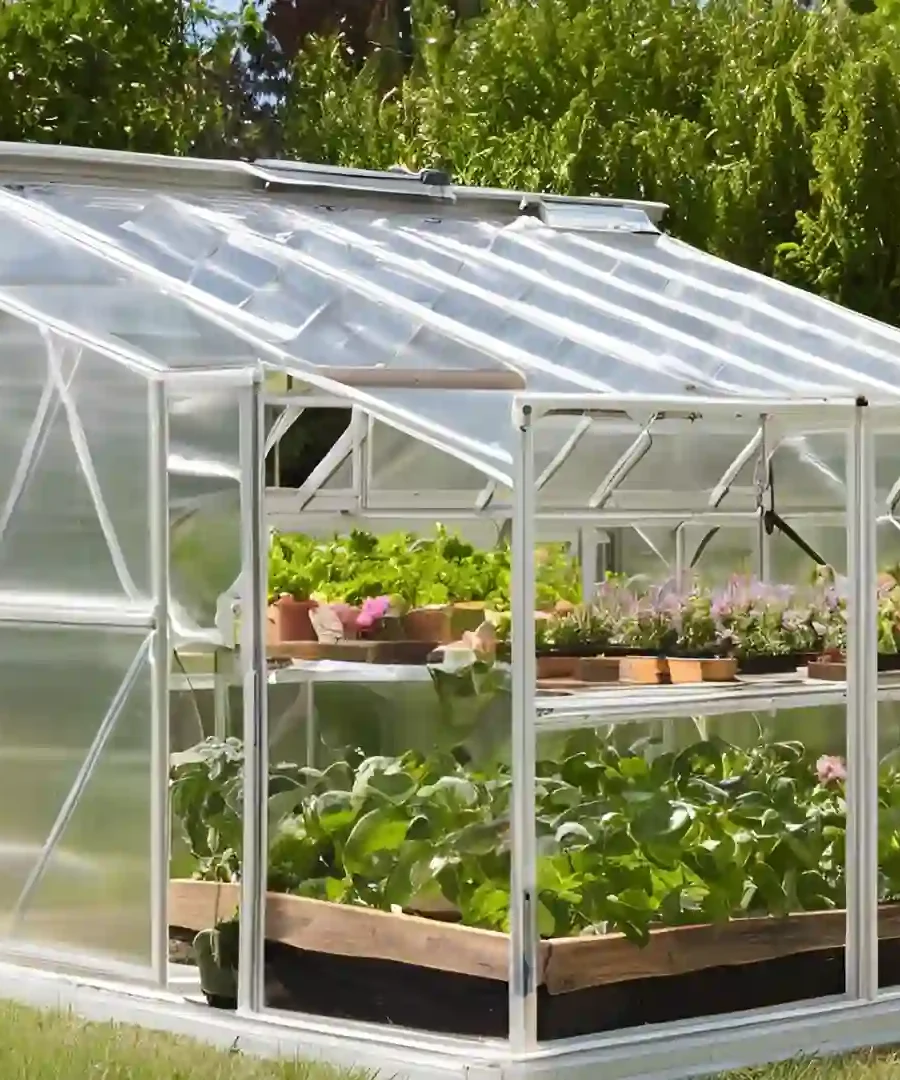Home » DIY Greenhouse

DIY Greenhouse
DIY Greenhouses: An Introduction
For those seeking durable, long-term solutions to safeguard their plants against severe weather, extend their growing season, or create a controlled gardening environment, a DIY greenhouse presents an ideal option. Careful planning with appropriate materials and tools enables you to create a structure aptly suited to your gardening needs, although in the beginning building and assembling a greenhouse may seem like a Herculean task. It does not matter, if you are a novice or an expert gardener, DIY a greenhouse provides a more dependable and consistent yield by facilitating year-round cultivation of various plants. Furthermore, this endeavor is not only enjoyable and fulfilling but can also lead to significant cost savings over time.
DIY Greenhouse: Why to Build One?
Pluses of a Greenhouse
- Prolonged Growing Season: Your plants are protected from early frosts and extend your growing season well into fall or even winter with a greenhouse.
- Controlled Temperature Environment: You can help your plants thrive in any weather conditions by maintaining the optimal temperature required by them.
- A Pests and Diseases Deterrent: Healthier plants with pests and diseases at bay in a barrier-like greenhouse.
- More Yield: Better plant productivity and overall harvest in a controlled environment is a great plus.
Planning Your DIY Greenhouse
Step 1: Decide on the Type of Greenhouse you need
At the outset, before collecting the fabrication materials, decide and determine the kind of greenhouse you require. Moreover, climate, your personal inclination, and space available are to be considered for the type of greenhouse. Some popular greenhouse types include:
- Lean-to-Greenhouse: If you have less space or want to save space using an existing structure for support to attach your greenhouse, this is absolutely the ideal type for you.
- Free-standing Greenhouse: These types, on the other hand, extend more flexibility and are larger in proportion and size. These stand-alone structures can be built anywhere in your outdoor space or yard.
- Hoop House: Simple to build and can be customized for different sizes, a Hoop House is easy to set up and cost-effective. Additionally, flexible pipes can be used to create arches and covered with plastic.
Step 2: Choosing the Right Location
Your plants need enough light and warmth throughout their life cycle. Therefore, the location of your greenhouse is pivotal. Consider these pointers when choosing a spot:
- Sunlight is Vital: 6-8 hours of direct sunlight a day is ideally required by plants. Consider this when you select the location. A south-facing location maximizes sun exposure and is ideal for colder climates.
- Leveled Ground: Ensuring a leveled ground for proper water drainage and stability is important.
- Wind Protection: Strong winds can impair the greenhouse. Therefore, it is imperative to choose a location that is not too windy.
Materials You Will Need
Frame Materials
If your greenhouse is the being, the frame is its skeleton. Select durable, strong materials. Commonly used materials are:
- Wood: Cost-effective and easy to work with, wood is a good option, but it does not have the long life of metal or PVC. Therefore, pressure-treated wood could be your choice to prevent rotting.
- PVC Pipes: They are cheap, lightweight, and flexible. For hoop house designs, PVC pipes are frequently utilized.
- Metal: If you can spend a little extra, you can opt for steel and aluminum. They are stronger and more durable but may be a bit difficult to deal with during the fabrication process.
Covering Materials
The covering is what keeps your greenhouse warm and protected. Common materials include:
- Polycarbonate Panels: First-rate insulation and UV protection come with polycarbonate panels. Moreover, for exceptional insulation, twin-wall polycarbonate is the best.
- Polyethylene Plastic: These are much favored in most greenhouses as they cost less. On the flip side, however, it could need replacement every four to five years.
- Shade Cloth: Shade cloth can help protect your plants from scorching and protect them from the sun. It is especially ideal in hot climatic zones.
Foundation Materials
Even though not every greenhouse needs a complete foundation, it’s still important to make sure your construction is safe and secure. Some options for foundations include:
- Concrete Slab: Provides a stable, long-lasting base. It’s great for permanent greenhouses.
- Gravel or Stone: A more affordable option that still provides proper drainage.
- Wooden or Metal Frame: Useful if you want to raise the greenhouse off the ground slightly for better airflow and drainage.



Pingback: Zebra Plant